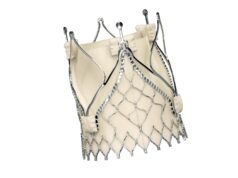
Women with significant aortic valve disease who undergo transcatheter aortic valve implantation (TAVI) have been traditionally considered at a higher risk than men in certain respects. However, their survival rate one year after having had the procedure is higher than men, according to a study published in the Journal of the American College of Cardiology.
Even though women have more complications as a result of the TAVI procedure—especially bleeding and vascular issues—they still fared better than men one year after the procedure. The reasons for this are not yet completely understood.
Previous studies have looked at the early outcomes after TAVI in men and women, and shown that the survival rate was the same for both sexes. However, this is the largest study to take an in-depth look at the longer-term outcomes and survival rates after TAVI in women and men.
“These findings are significant because it may mean heart teams are overestimating the risks of TAVI in some women and that also may mean that valve implantation is underutilised,” says Roxana Mehran, professor of medicine in cardiology at The Zena and Michael A Wiener Cardiovascular Institute, Icahn School of Medicine at Mount Sinai, New York City, USA, and the study’s senior researcher. “In other words, some women who could benefit from TAVI may not be getting it.”
Using data from the STS/ACC TVT Registry, the study looked at more than 23,000 patients receiving TAVI with older generation devices between 2011 and 2014 with an almost equal proportion of women (49.9%) and men (51.1%).
In general, the women were older and had higher predicted 30-day risk scores. However, they were more likely to have other health issues at baseline, such as worsened kidney function, significant problems related to a leaking mitral heart valve and heavily-calcified aorta.
Men were more likely to be treated with percutaneous TAVI, whereas women were more likely to have a surgical incision for TAVI. Additionally, although very rare, there was a greater chance that the operating cardiologist or surgeon would need to abort TAVI and switch over to open surgery—due to complications—in women.
Overall, despite the fact that women had more procedural problems, they had better survival at one year. In addition, with smaller and improved TAVI devices, women can increasingly undergo procedures percutaneously via the smaller artery in the groin, which would be expected to reduce the risk of procedural complications as well.
“These study results also highlight that we need a robust scoring assessment that is specific to TAVI and catered to women so we can make the best decisions,” Mehran says. “Additionally, further study is needed on the medium- to long-term causes of death in men and women who have had TAVI, particularly studies that are focused on learning more about vascular biology and why the aorta becomes more calcified in women.”
Mehran also said that there are promising advances being made in 3D-printing technology that will improve devices used in TAVI. As a result of improved technology, outcomes will likely further improve in both men and women.
In an accompanying editorial, Molly Szerlip, a cardiologist at The Heart Hospital Baylor Plano in Plano, USA, says, “One should, however, interpret the results of this study with caution. The findings of this study are only applicable to the population that was studied and should not necessarily be extrapolated to lower risk populations or to patients who receive newer generation valves.”










